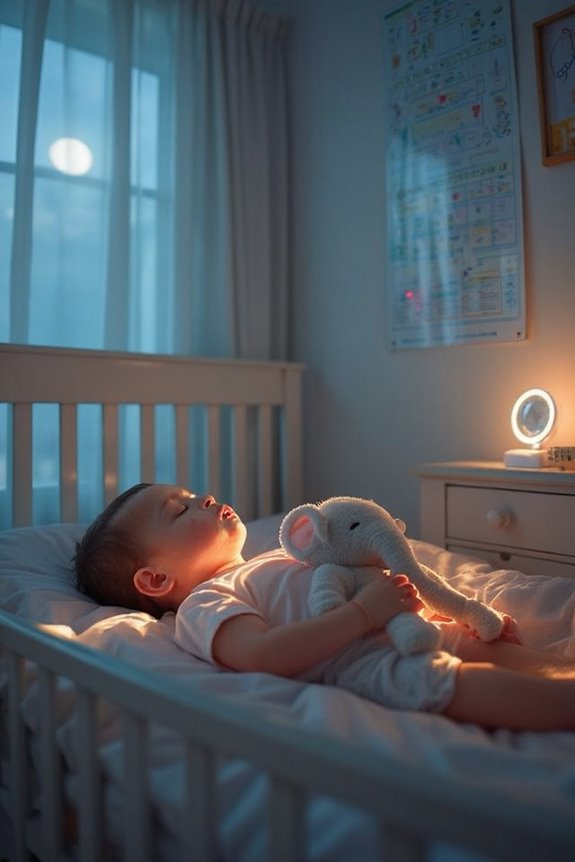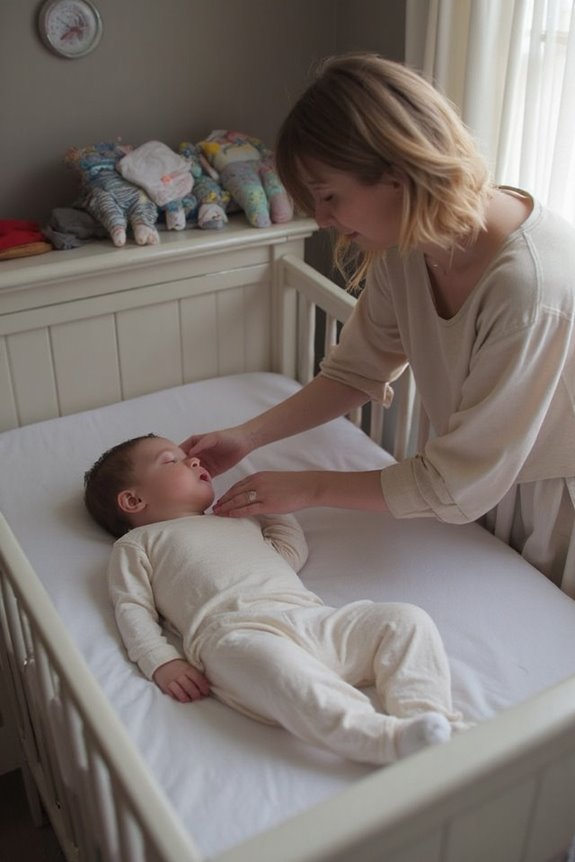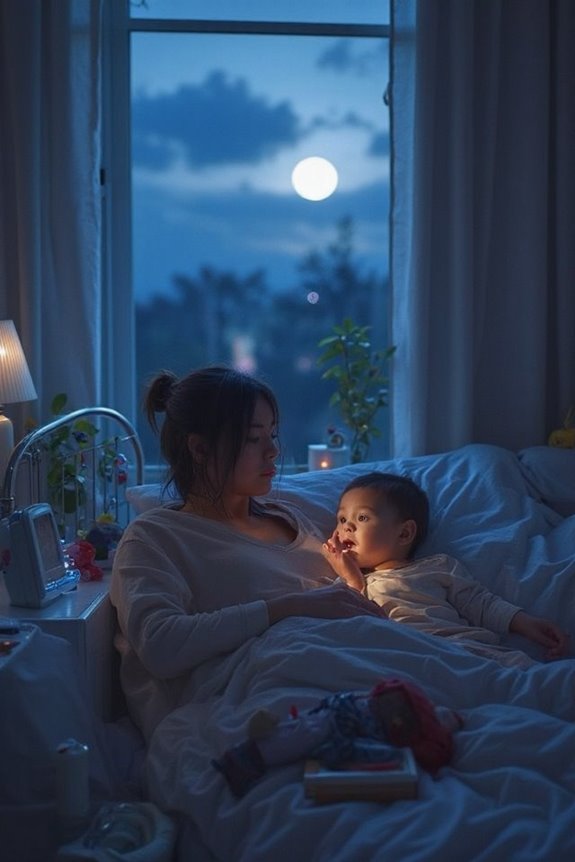While babies spend about 50% of sleep in REM (dream) state, they likely don’t experience nightmares as we comprehend them. Infants lack the cognitive development needed to create scary narratives or process complex emotions. What parents often interpret as nightmares—crying during sleep or sudden waking—typically stems from physical discomfort, hunger, or normal sleep shifts. True nightmares generally don’t emerge until ages 3-6 when imagination and fears develop. The explanation for your baby’s nighttime distress may surprise you.
Key Takeaways
- True nightmares are unlikely before 6 months as visual processing structures are still developing.
- Infants’ crying or distress during sleep often relates to physical needs, not psychological dream content.
- While babies experience REM sleep, it primarily serves developmental functions rather than creating narrative dreams.
- Nightmares typically emerge during preschool years (ages 3-6) when imagination and cognitive abilities mature.
- What parents interpret as nightmares in infants are usually normal sleep transitions or night terrors occurring in NREM sleep.
What Science Tells Us About Infant Dreams
While adults often remember vivid dreams after waking, the dreaming experience of babies remains largely mysterious to science. The field of sleep psychology has uncovered some fascinating insights:
- Infants spend approximately 50% of their sleep in REM stage, compared to 20-25% in adults
- Brain activity during REM begins as early as two weeks of age
- Dream interpretation remains impossible due to babies’ inability to communicate
Research suggests that infant REM sleep serves primarily developmental functions rather than creating complex dreamscapes. Scientists debate when true dreaming begins, with many pointing to the 4-5 month mark when visual processing structures mature.
The challenge in studying infant dreams stems from both technological limitations in measuring brain activity and the inherently subjective nature of dreaming experiences.
Brain Development and Dream Capacity in Babies
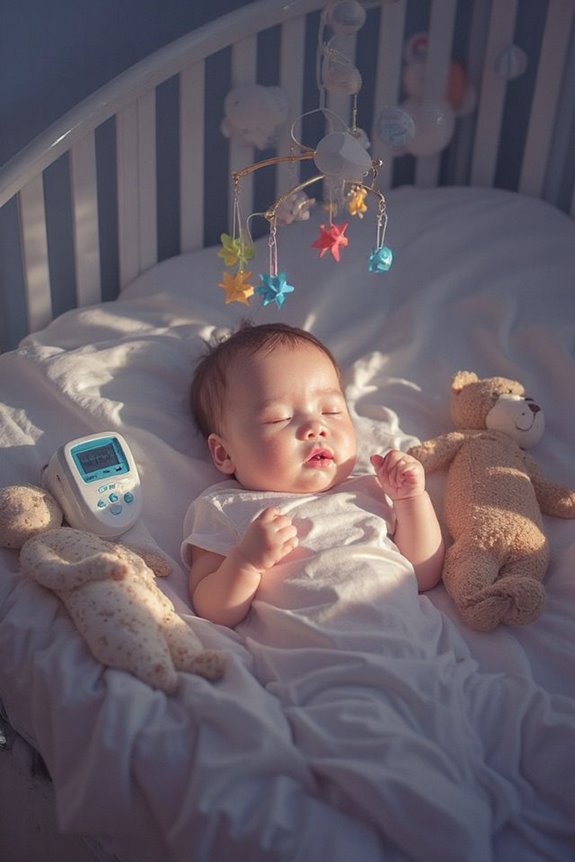
Because a baby’s brain develops at an astonishing rate during the first years of life, their dream capacity evolves alongside their cognitive abilities. This rapid development includes neuron differentiation, which is vital for establishing the neural pathways necessary for cognitive processing.
Key aspects of infant dream development:
- Newborns spend approximately 50% of sleep in REM state, compared to only 20-25% in adults
- Brain maturation processes directly influence dream complexity
- Active sleep movements may contribute to neurological development
- REM sleep provides essential neural stimulation for developing brains
While infants experience significant brain activity during REM sleep, their ability to form structured dreams likely develops gradually as their cognitive processing abilities mature. This progression follows their overall brain development timeline, with more complex dream capabilities emerging around age 2.
Understanding REM Sleep in Newborns
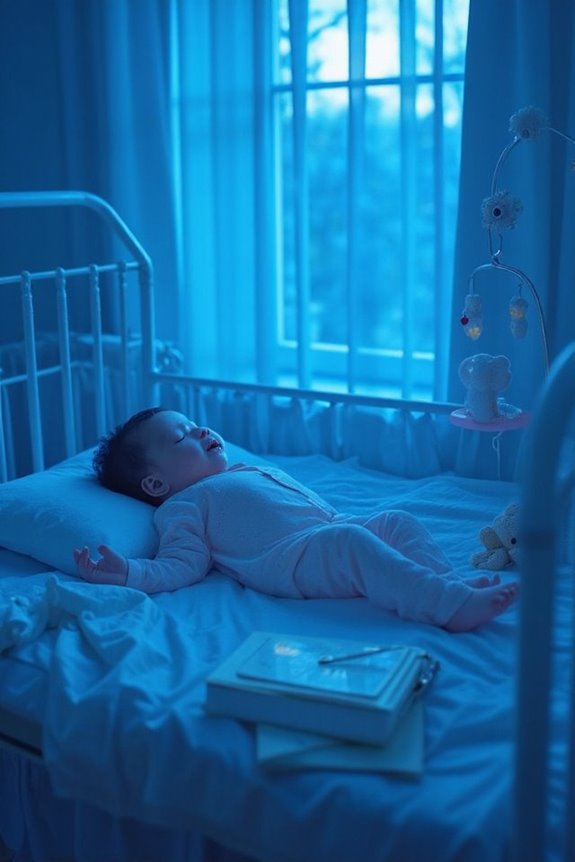
Why do newborns spend so much time in REM sleep compared to adults? This relates directly to infant development. Newborns dedicate about 50% of their sleep time to REM sleep—approximately 9 hours daily—because it supports neural plasticity, which is essential for brain development.
Babies experience significant sleep fragmentation, with shorter sleep cycles than adults. During REM sleep, they display distinct physiological characteristics:
- Irregular breathing patterns
- Variable heart rates
- Random limb movements
- Minimal chin muscle activity
While dream occurrence happens during REM sleep, we can’t confirm that newborns experience dreams as adults do. Their total sleep duration typically reaches 16-18 hours daily, with frequent shifts between REM and non-REM states. This pattern gradually evolves as their brains mature, eventually resembling adult sleep cycles.
When Nightmares Actually Begin in Childhood
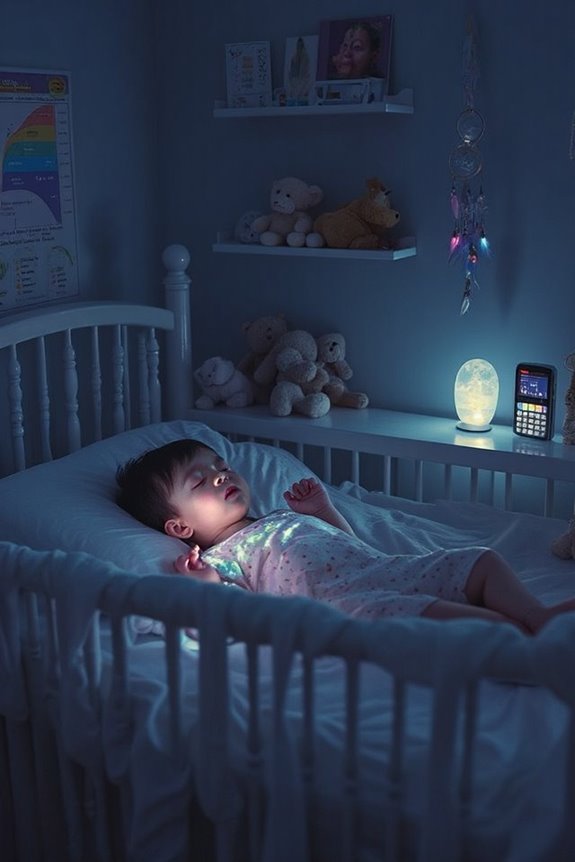
Although many parents wonder if their newborns experience bad dreams, true nightmares don’t typically emerge until later in development. Nightmare onset can begin as early as 6 months of age, though this is relatively uncommon.
The prime time for nightmares is during the preschool years (ages 3-6), when children’s imaginations become more vivid and they process complex emotions through dreams. Children between 3 and 12 years old experience the highest frequency of nightmares, with a notable peak between ages 3 and 6.
Common triggers for childhood fears that manifest as nightmares include:
- Stress and anxiety
- Being overtired
- Exposure to frightening content
- Processing daytime events
- Feeling insecure or afraid
Nightmares generally decrease as children mature into adolescence.
Signs Parents Mistake for Nightmares in Infants
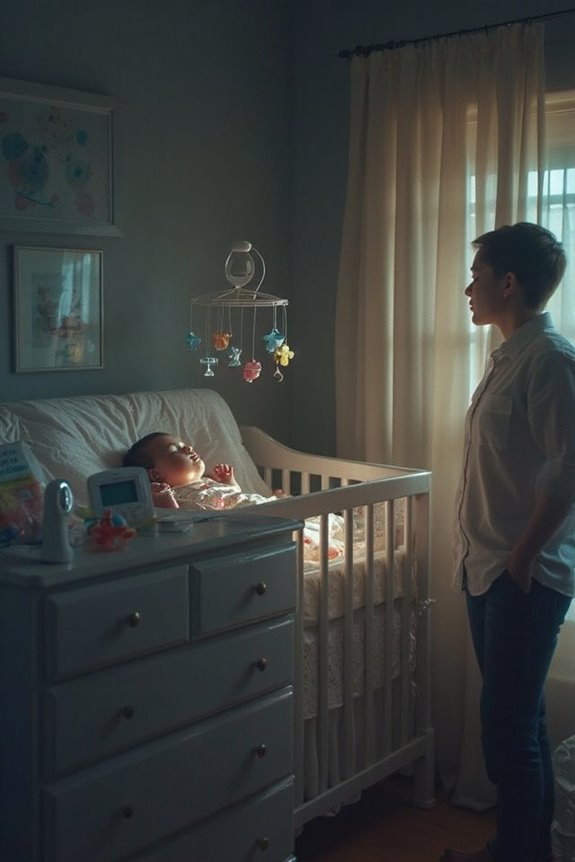
Many parents become concerned when their babies cry or appear distressed during sleep, often interpreting these behaviors as nightmares. However, infant crying patterns during sleep typically stem from other causes.
- Normal sleep cycles: Babies shift between sleep stages frequently, causing restlessness or vocalizations unrelated to dreams
- Physical needs: Hunger, discomfort, or illness often trigger night crying
- Developmental factors: Sleep regressions or separation anxiety can disrupt sleep patterns
What parents might interpret as nightmares in infants are usually:
- Brief wakings during REM sleep
- Reflexive movements or thrashing
- Night terrors (occurring in deep NREM sleep)
Infants lack the cognitive development necessary to experience nightmares as older children do. Their distress during sleep rarely indicates psychological distress from dreams.
Protective Parenting Strategies for Better Sleep
Creating a safe sleep environment for your baby isn’t just about preventing nightmares—it’s about establishing healthy sleep habits and reducing potential risks.
For protective sleep, remember these essentials:
- Place your baby on a firm, flat mattress in a safety-approved crib
- Keep the crib empty—no bumpers, pillows, or blankets
- Always position your baby on their back for sleep
- Share your room but not your bed with your baby
Effective calming techniques include:
- Establishing a consistent bedtime routine with baths and soft music
- Using gentle patting and reassurance when your baby wakes
- Providing daytime cuddling to enhance security
- Minimizing stimulation before bedtime
Regular monitoring of your baby’s sleep environment and seeking professional advice when needed will help guarantee safe, quality sleep.
How to Respond to Night Disturbances in Babies
After establishing a protective sleep environment, you’ll need practical strategies for when your baby still wakes during the night. Remember that night waking is extremely common—25-50% of infants continue waking at night through their first year.
When responding to disturbances:
- Maintain consistency in your approach
- Respond calmly but minimize excessive intervention
- Monitor the frequency of wakings (more than two per night may indicate a sleep issue)
- Note changes in sleep patterns as your baby develops
For infants under 12 months, night wakings typically relate to feeding or comfort needs. After 12 months, disturbances may increasingly involve nightmares or restlessness.
The sleep location matters—infants in parent beds show more frequent wakings at 3, 6, and 9 months. Consider gradually shifting older babies to their own sleep space.
Frequently Asked Questions
Can Babies Remember Their Dreams or Nightmares After Waking?
I’d say infant sleep research suggests babies have limited dream recall capacity. They likely don’t remember their dreams after waking due to their developing memory systems and inability to verbally articulate these experiences.
Do Certain Foods Affect Nightmare Frequency in Infants and Toddlers?
Let’s hit the nail on the head: While research is limited, certain food types like processed foods may increase nightmare frequency in infants. Inconsistent meal timing can also disrupt sleep patterns in toddlers. I’d recommend a balanced diet.
Are Nightmares Genetic or Influenced by Family History?
I’d say nightmares have both genetic and environmental components. While there’s a 5% genetic heritability, family stress can be a significant nightmare trigger. Environmental factors actually account for 29% of nightmare variance.
How Do Premature Babies Differ in Dream Development?
I’m fascinated that premature babies spend up to 90% of sleep in REM state! Their dream development likely differs due to disrupted premature development and altered sleep patterns compared to full-term infants’ more regulated experiences.
Can White Noise or Sleep Aids Prevent Nightmares in Young Children?
I believe white noise may help by reducing sleep disturbances, though it’s not proven to directly prevent nightmares. Sleep aids can create a comforting environment that might indirectly minimize stress-related sleep disruptions in children.


